Wuyang Zhou
Domain-Aware Tensor Network Structure Search
May 29, 2025Abstract:Tensor networks (TNs) provide efficient representations of high-dimensional data, yet identification of the optimal TN structures, the so called tensor network structure search (TN-SS) problem, remains a challenge. Current state-of-the-art (SOTA) algorithms are computationally expensive as they require extensive function evaluations, which is prohibitive for real-world applications. In addition, existing methods ignore valuable domain information inherent in real-world tensor data and lack transparency in their identified TN structures. To this end, we propose a novel TN-SS framework, termed the tnLLM, which incorporates domain information about the data and harnesses the reasoning capabilities of large language models (LLMs) to directly predict suitable TN structures. The proposed framework involves a domain-aware prompting pipeline which instructs the LLM to infer suitable TN structures based on the real-world relationships between tensor modes. In this way, our approach is capable of not only iteratively optimizing the objective function, but also generating domain-aware explanations for the identified structures. Experimental results demonstrate that tnLLM achieves comparable TN-SS objective function values with much fewer function evaluations compared to SOTA algorithms. Furthermore, we demonstrate that the LLM-enabled domain information can be used to find good initializations in the search space for sampling-based SOTA methods to accelerate their convergence while preserving theoretical performance guarantees.
TensorLLM: Tensorising Multi-Head Attention for Enhanced Reasoning and Compression in LLMs
Jan 26, 2025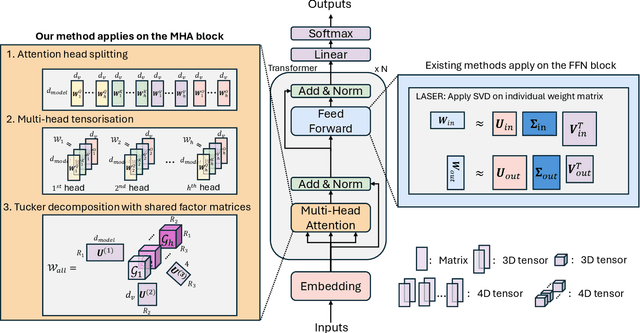
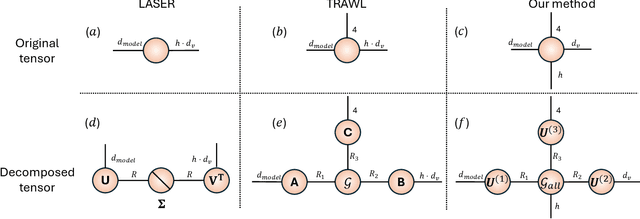
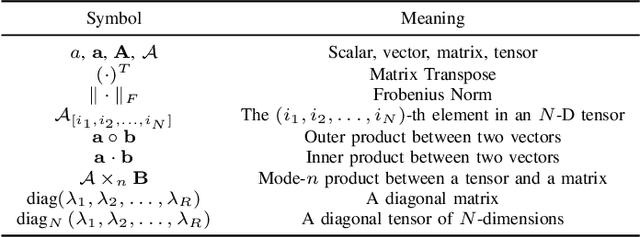
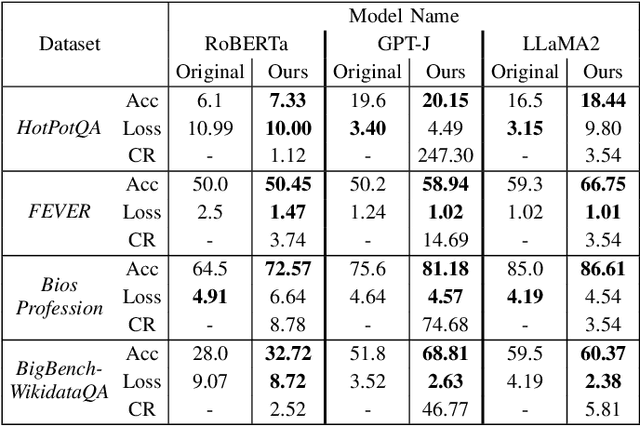
Abstract:The reasoning abilities of Large Language Models (LLMs) can be improved by structurally denoising their weights, yet existing techniques primarily focus on denoising the feed-forward network (FFN) of the transformer block, and can not efficiently utilise the Multi-head Attention (MHA) block, which is the core of transformer architectures. To address this issue, we propose a novel intuitive framework that, at its very core, performs MHA compression through a multi-head tensorisation process and the Tucker decomposition. This enables both higher-dimensional structured denoising and compression of the MHA weights, by enforcing a shared higher-dimensional subspace across the weights of the multiple attention heads. We demonstrate that this approach consistently enhances the reasoning capabilities of LLMs across multiple benchmark datasets, and for both encoder-only and decoder-only architectures, while achieving compression rates of up to $\sim 250$ times in the MHA weights, all without requiring any additional data, training, or fine-tuning. Furthermore, we show that the proposed method can be seamlessly combined with existing FFN-only-based denoising techniques to achieve further improvements in LLM reasoning performance.
Towards LLM-guided Efficient and Interpretable Multi-linear Tensor Network Rank Selection
Oct 14, 2024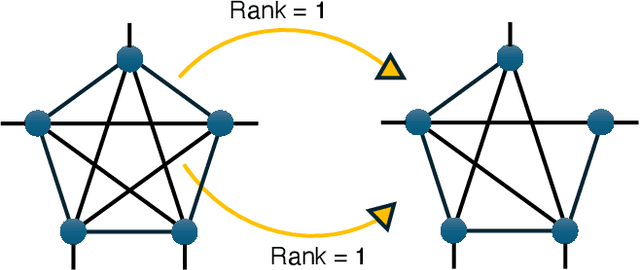
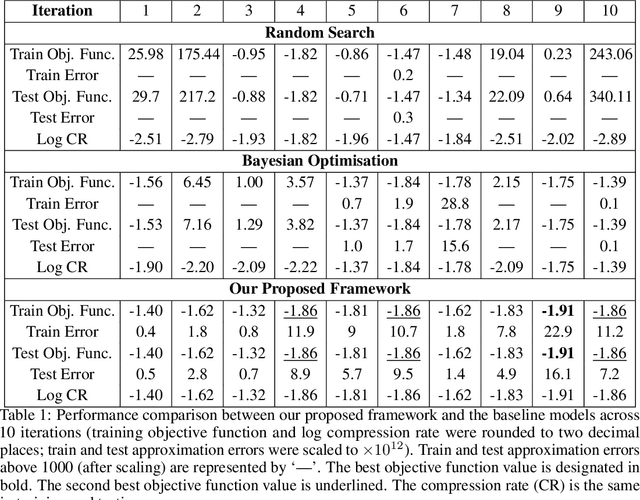
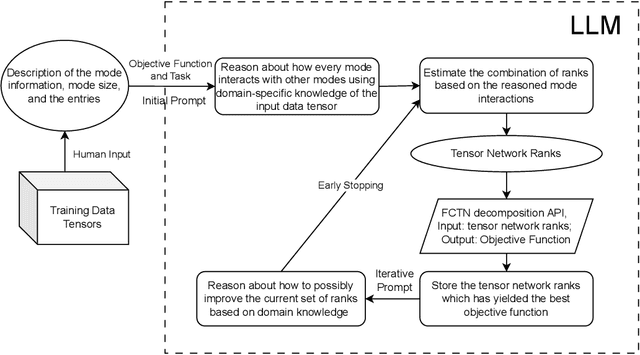
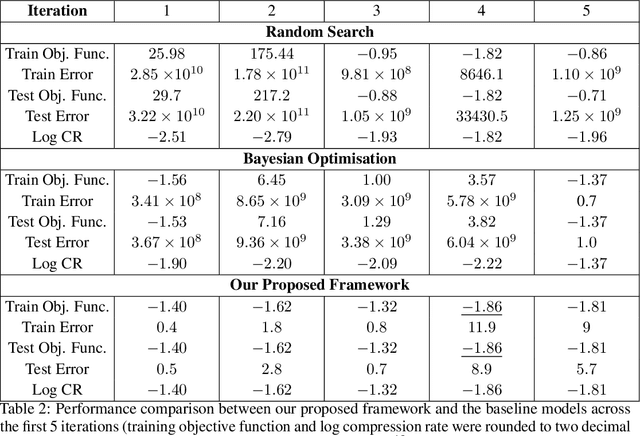
Abstract:We propose a novel framework that leverages large language models (LLMs) to guide the rank selection in tensor network models for higher-order data analysis. By utilising the intrinsic reasoning capabilities and domain knowledge of LLMs, our approach offers enhanced interpretability of the rank choices and can effectively optimise the objective function. This framework enables users without specialised domain expertise to utilise tensor network decompositions and understand the underlying rationale within the rank selection process. Experimental results validate our method on financial higher-order datasets, demonstrating interpretable reasoning, strong generalisation to unseen test data, and its potential for self-enhancement over successive iterations. This work is placed at the intersection of large language models and higher-order data analysis.
EasyTrack: Efficient and Compact One-stream 3D Point Clouds Tracker
Apr 12, 2024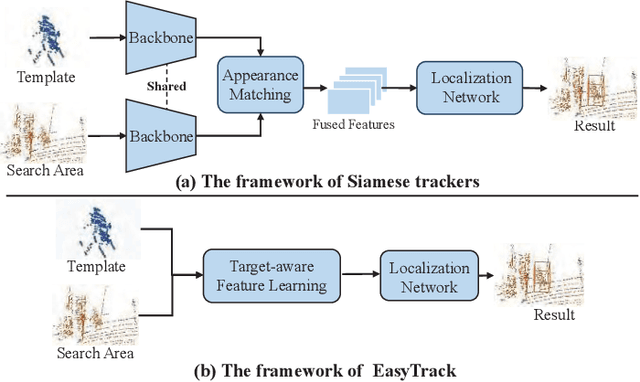
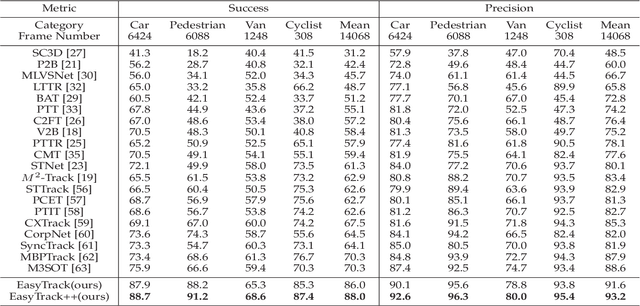
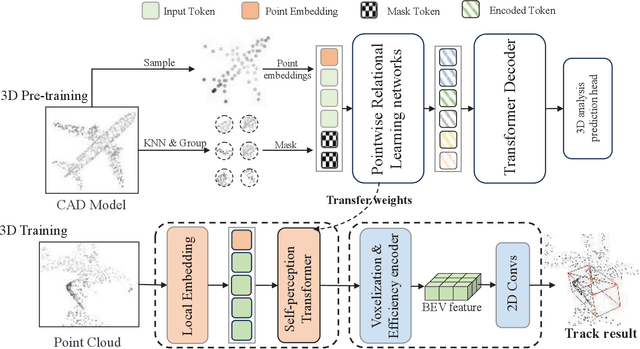

Abstract:Most of 3D single object trackers (SOT) in point clouds follow the two-stream multi-stage 3D Siamese or motion tracking paradigms, which process the template and search area point clouds with two parallel branches, built on supervised point cloud backbones. In this work, beyond typical 3D Siamese or motion tracking, we propose a neat and compact one-stream transformer 3D SOT paradigm from the novel perspective, termed as \textbf{EasyTrack}, which consists of three special designs: 1) A 3D point clouds tracking feature pre-training module is developed to exploit the masked autoencoding for learning 3D point clouds tracking representations. 2) A unified 3D tracking feature learning and fusion network is proposed to simultaneously learns target-aware 3D features, and extensively captures mutual correlation through the flexible self-attention mechanism. 3) A target location network in the dense bird's eye view (BEV) feature space is constructed for target classification and regression. Moreover, we develop an enhanced version named EasyTrack++, which designs the center points interaction (CPI) strategy to reduce the ambiguous targets caused by the noise point cloud background information. The proposed EasyTrack and EasyTrack++ set a new state-of-the-art performance ($\textbf{18\%}$, $\textbf{40\%}$ and $\textbf{3\%}$ success gains) in KITTI, NuScenes, and Waymo while runing at \textbf{52.6fps} with few parameters (\textbf{1.3M}). The code will be available at https://github.com/KnightApple427/Easytrack.
Tensor Star Decomposition
Mar 15, 2024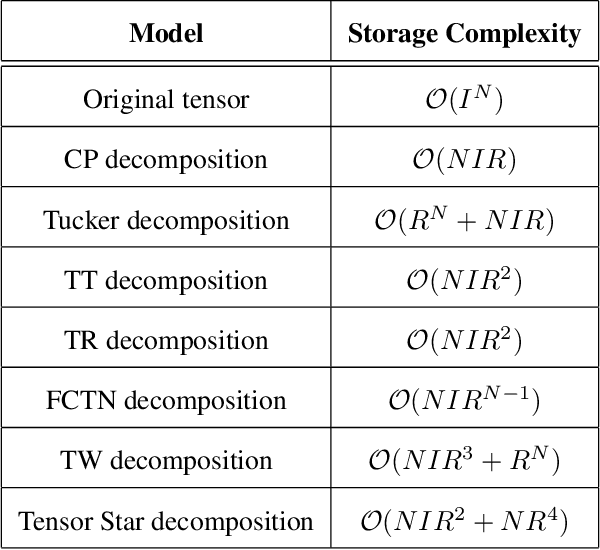
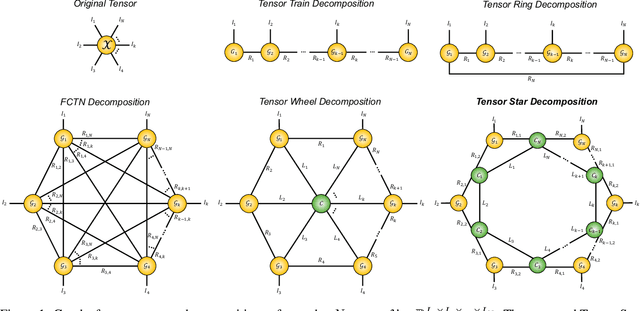
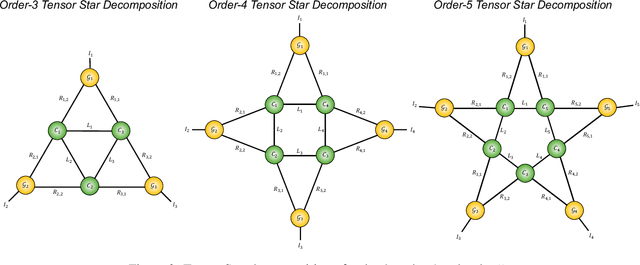
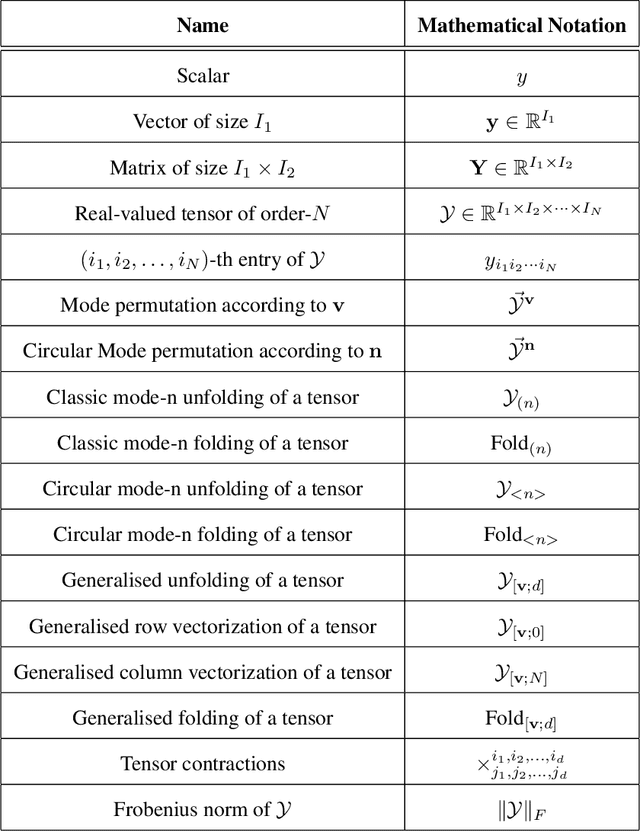
Abstract:A novel tensor decomposition framework, termed Tensor Star (TS) decomposition, is proposed which represents a new type of tensor network decomposition based on tensor contractions. This is achieved by connecting the core tensors in a ring shape, whereby the core tensors act as skip connections between the factor tensors and allow for direct correlation characterisation between any two arbitrary dimensions. Uniquely, this makes it possible to decompose an order-$N$ tensor into $N$ order-$3$ factor tensors $\{\mathcal{G}_{k}\}_{k=1}^{N}$ and $N$ order-$4$ core tensors $\{\mathcal{C}_{k}\}_{k=1}^{N}$, which are arranged in a star shape. Unlike the class of Tensor Train (TT) decompositions, these factor tensors are not directly connected to one another. The so obtained core tensors also enable consecutive factor tensors to have different latent ranks. In this way, the TS decomposition alleviates the "curse of dimensionality" and controls the "curse of ranks", exhibiting a storage complexity which scales linearly with the number of dimensions and as the fourth power of the ranks.
 Add to Chrome
Add to Chrome Add to Firefox
Add to Firefox Add to Edge
Add to Edge